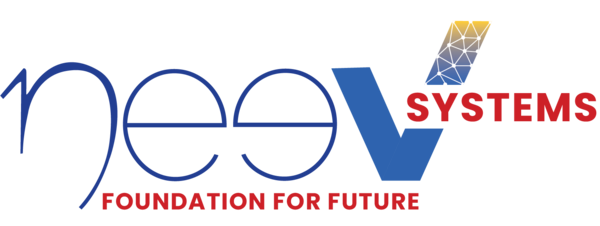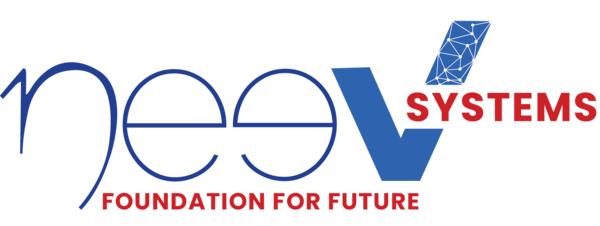In today’s fast-paced business landscape, companies face the daunting challenge of navigating through a complex web of applications, data, cloud services, and networks. To remain agile, responsive, and profitable, they need to embrace the power of enterprise integration. But what is enterprise integration, and why is it so crucial for modern businesses? In this comprehensive guide, we’ll explore the concept of enterprise integration, its importance, different types of integration, the technology behind it, best practices, and why it’s indispensable for the success of modern businesses. So let’s get started.
What is Enterprise Integration?
Enterprise integration is the process of using technology and methodologies to seamlessly connect and synchronize all elements within an organization’s IT landscape. This includes applications, data, clouds, APIs, processes, and devices. True integration means that everything in the organization can work together in real-time, allowing businesses to streamline processes, gain better customer insights, adapt quickly, and ultimately, stay ahead in a competitive market.
Why is Enterprise Integration Important for Modern Businesses?
The significance of enterprise integration cannot be overstated. Here are some key reasons why it is vital for businesses today:
- Legacy Technologies Hinder Growth: Companies using outdated technologies limit their ability to embrace new technologies, cloud services, and SaaS applications. Enterprise integration services improve data exchange and customer relationships and reduce errors through automation.
- Future-proofing IT Landscape: As digital transformation becomes essential, businesses need to connect legacy systems with modern cloud technologies. Enterprise integration, with its API-first approach, enables the extraction of real-time data from legacy systems, supporting business continuity and modernization.
- Optimized and Automated Business Processes: Fragmented and disconnected processes slow down workflows and hinder operational efficiency. With enterprise integration, companies can connect, optimize, and automate processes, ensuring seamless customer and employee experiences.
- Better Customer Insight: Customer information comes from various sources in different formats. Enterprise integration enables businesses to consolidate and interpret this data, providing a 360-degree view of customers while ensuring compliance with privacy regulations.
- Opportunities in the API Economy: Businesses are increasingly harnessing the API economy to create ecosystems, enabling seamless information exchange, unique services, and competitive differentiation.
- Efficient and Quick Onboarding: Rapid onboarding of partners and customers is crucial. Modern integration platforms streamline partner integration, increasing visibility and transparency during the onboarding process.
- An ‘Outside-In’ Approach: Modern businesses prioritize external customer and partner relationships and integrate data flows into their internal systems, streamlining B2B, application, and data integrations.

Transform Your Business With Seamless Integration
Types of Enterprise Integration
Enterprise integration encompasses various types, each serving a specific purpose:
- Application Integration: This optimizes, integrates, and shares data and processes between different software applications in real time.
- Data Integration: It discovers, retrieves, and unifies data from diverse sources into a structured view.
- Cloud Integration: Combines hybrid cloud environments, including public and private clouds, into a cohesive IT infrastructure.
- API Integration: Connects enterprise applications via APIs to enable data exchange and drive productivity.
- Platform Integration: Utilizes a set of software products to develop secure integration flows connecting applications, systems, services, and data sources.
- Process Integration: Optimizes workflows and processes spanning multiple applications and systems.
- Device Integration: Connects different devices to support business needs and enhance productivity.
Enterprise Integration Platforms and Technologies
To achieve integration at scale, businesses rely on various platforms and technologies:
iPaaS (Integration Platform as a Service):
A cloud-based service that supports integration scenarios for applications, data, processes, and service-oriented architecture.
Pros:
– Cloud-based, making it scalable and cost-effective.
– Supports a wide range of integration scenarios, including applications, data, processes, and service-oriented architecture.
– Often comes with pre-built connectors and templates for popular applications.
Cons:
– May have limitations when it comes to highly complex or customized integration requirements.
Messaging:
Enables communication between components in a distributed application architecture.
Pros:
– Enables reliable communication between components in distributed applications.
– Can support both synchronous and asynchronous communication.
Cons:
– Requires careful design to ensure message delivery and error handling.
Pub/sub (Publish/Subscribe):
Exchanges event data between applications, devices, and services in real-time, often used for decoupled and event-driven architectures.
Pros:
– Facilitates real-time event-driven architectures.
– Allows for loose coupling between components, making systems more scalable and flexible.
Cons:
– May introduce complexity in managing subscribers and topics.
Application Connectors:
Standard class connections customized for specific APIs, facilitating quick integration of new endpoints.
Pros:
– Speeds up integration by providing pre-built connectors for specific APIs.
– Reduces the need for custom coding for connecting to various endpoints.
Cons:
– Limited to the APIs and endpoints that have pre-built connectors.
Data Streams:
Provides a constant flow of information that applications can add to or consume independently.
Pros:
– Provides a continuous flow of real-time data.
– Supports real-time analytics and event processing.
Cons:
– Requires robust data processing and storage infrastructure to handle the constant stream of data.
Enterprise Integration Patterns (EIPs):
Offers technology-independent solutions to common integration problems and provides a common language for describing integrations.
Pros:
– Offers a set of standardized, proven solutions to common integration challenges.
– Provides a common language for discussing integration solutions.
Cons:
– Still requires custom development to implement EIPs within specific systems.
Application Programming Interfaces (APIs):
Sets of tools, definitions, and protocols for building application software, enabling communication between different products and services.
Pros:
– Standardized tools and protocols for building application software.
– Enables seamless communication between different products and services.
Cons:
– Requires proper API documentation and management for effective use.
Features to Look for in Enterprise Integration Software
Selecting the right enterprise integration platform is a critical decision. To make an informed choice, consider the following features:
- Data Integration: Ensure the platform supports safe storage, retrieval, and transmission of data in various formats.
- Monitoring and Management: Look for monitoring and management capabilities to track performance metrics and manage system configurations.
- Ease of Use: Choose software that is intuitive and easy to use, allowing users of different backgrounds to personalize data views and actions.
- Timely, Fully Responsive Support: Ensure the software provides the support you need for efficient operations.
- Automation: Look for automation features that streamline data tracking and integration processes.
- Scalability: Ensure the platform can grow with your business. Scalability is essential as your data and integration needs evolve.
- Flexibility: Look for a platform that can adapt to various integration scenarios and support multiple data formats, protocols, and applications.
- Security: Data security is paramount. Ensure the platform provides robust security features, encryption, and access controls to protect sensitive information.
- Message Brokers: Capability to manage and route messages efficiently through a central hub.
- Cost and Licensing Model: Transparent pricing and flexible licensing options based on usage, users, or features.
The right enterprise integration platform can be a game-changer for your business. It can empower your organization to thrive in the digital era, respond to market dynamics, and deliver exceptional customer experiences. Effective enterprise integration connects an organization’s entire ecosystem, providing agility, visibility, efficiency, cost savings, and accelerated growth. It empowers businesses to adapt, innovate, and meet the evolving needs of customers in a rapidly changing world.
Thus, enterprise integration is not just a technical necessity; it’s a strategic imperative that can give businesses a competitive edge in the digital age. The ability to seamlessly connect and integrate various systems, processes, and data sources can make a world of difference in a company’s efficiency, innovation, and customer satisfaction.
Best Practices in Enterprise Integration
Successful enterprise integration requires the following best practices:
- Start with a Platform Approach: A platform-based approach supports multiple dimensions of enterprise connectivity across on-premises, cloud, and hybrid ecosystems.
- Use APIs as Foundational Building Blocks: APIs serve as interchangeable integration components, supporting the integration of people, processes, and systems.
- Make Integration Accessible to Everyone: Democratize integration to empower users with no-code build experiences, reducing reliance on dedicated developers.
- Implement Smart Lifecycle Management: Create management plans for access control, change management, extending integrations, system credential management, and data encryption.
- Drive Continual Improvements with Analytics and Predictive Intelligence: Use integration activity analytics and predictive intelligence to gain insights and recognize integration patterns.
- Establish an Integration Center of Excellence (ICoE): A central function that integrates data, systems, cloud, and applications coherently, promoting enterprise integration as a formal discipline.
In today’s modern enterprise, effective integration is essential for all systems, technologies, and processes to work seamlessly as a well-oiled machine, enhancing customer experience, enabling digital transformation, and unlocking new growth opportunities.
Five Models of Enterprise Application Integration
- Point-to-Point Model: This straightforward model involves creating unique connector programs for each integration. While effective for small operations, it can become unwieldy when dealing with numerous systems. Nevertheless, it provides flexibility through an abstraction layer, offering speed, reliability, and cost-efficiency.
- Hub-and-Spoke Model: In this model, a central component serves as the integration hub, facilitating connections among various elements. Businesses can add or remove components as needed. Data is reformatted and distributed from one database, with developers responsible for routing information to the correct destination.
- Enterprise Service Bus Model (ESB): Built on the principles of Service-Oriented Architecture (SOA), the ESB model creates an indirect connection between systems, allowing for the development of simpler applications. ESB is an evolution of the hub-and-spoke model, ideal for complex systems, requiring less developer involvement, and offering scalability.
- Middleware: Middleware acts as a bridge between applications, users, and data. It streamlines data flow between systems and interfaces, making data aggregation across services more manageable. Various types of middleware, such as message brokers and transaction processing monitors, support EAI.
- Microservices: Microservices involve breaking down extensive applications into smaller, independent components. These components communicate via APIs, allowing for uninterrupted operation even if some services fail or require modifications. Microservices support easy scalability across multiple platforms and devices.
Future Trends of Enterprise Integration To Look For In 2024
- Cloud-Centric Integration: Cloud-based integration will continue to gain prominence, facilitating seamless connectivity between applications and systems in various environments.
- Hybrid Integration Platforms: Organizations will increasingly leverage both on-premises and cloud-based applications, leading to the rise of hybrid integration platforms that offer unified management across diverse systems.
- API-Centric Integration: Application Programming Interfaces (APIs) will play a crucial role, enabling secure data and service exposure for third-party integration and the development of new applications.
- IoT Integration: As the Internet of Things (IoT) devices proliferate, EAI will adapt to accommodate IoT data integration, enabling seamless connectivity and real-time data exchange.
- Advanced Data Integration and Analytics: EAI will focus on integrating and analyzing large volumes of structured and unstructured data, leveraging AI and machine learning for automation and data-driven insights.
- Event-Driven Architecture: Event-driven EAI will enable real-time integration and response, allowing organizations to react swiftly to changing conditions and trigger actions based on events.
- Security and Governance: Robust security measures, identity management, and data protection will be integral to EAI to ensure data confidentiality, integrity, and availability.
- Low-Code and No-Code Solutions: To meet the demand for agility and faster deployments, low-code and no-code integration platforms will empower non-technical users to build and manage integrations with minimal coding.
- Microservices-Based Architecture: Microservices will influence EAI, enhancing scalability, flexibility, and reusability, accelerating integration development and deployment.
- Standards and Interoperability: The adoption of standards like REST, JSON, and OpenAPI will ensure seamless integration between applications and platforms.
Conclusion
In conclusion, enterprise integration is not a one-time task but an ongoing process. It requires a strategic approach, a well-chosen integration platform, and a commitment to continuous improvement. As technology continues to advance and business environments evolve, staying at the forefront of integration practices will be essential for maintaining a competitive edge.
Enterprise integration is not just a technical necessity; it’s a fundamental driver of business success in the 21st century. Companies that harness the power of integration will be better equipped to adapt, innovate, and thrive in an ever-changing business landscape. So, don’t wait; start exploring your enterprise integration options and unlock the full potential of your organization today.
How Neev Systems Can Help?
Neev Systems excels in MuleSoft, Oracle Integration Services, Dell Boomi, and SnapLogic, delivering top-tier integration services. Our strategic advisory and implementation services ensure seamless integration across your IT stack, providing real-time, consistent data views across systems and applications.
With our industry-leading integration platforms and best practices, our skilled experts design, implement, and manage tailored integration solutions. We unlock your IT ecosystem’s full potential, offering state-of-the-art integrations through agile delivery models, reusable patterns, process automation, and cost-effective dual-shore operations. This minimizes complexity, boosts organizational agility, and fortifies your competitive edge.
Leveraging our technical prowess, adaptability, and reliability, we streamline enterprise integrations, fostering improved collaboration and data exchange both within and outside your organization.Talk to Our Experts Now.

Supercharge Your Operations

Ansar Syed
With 10+ years of experience as an integration architect, Ansar specializes in delivering complex business solutions through strategic planning, custom designs, and process automation. He collaborates closely with stakeholders to enable seamless business processes and exceptional outcomes using integration tools.


